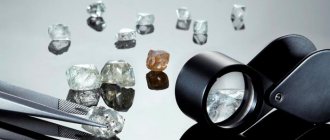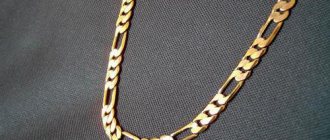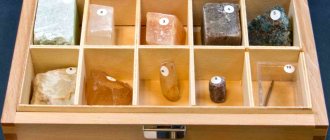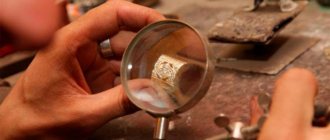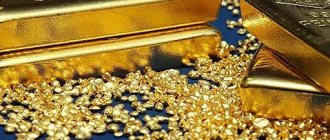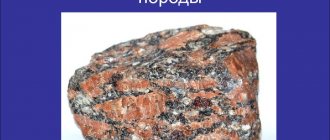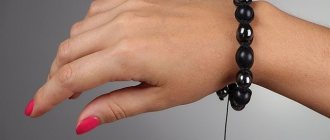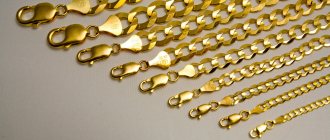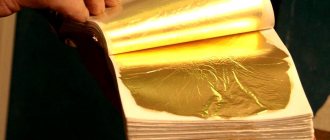How to cast an aluminum part at home
For many, the term “foundry” is closely associated with back-breaking labor and specialized professional skills.
In fact, casting a part from the required metal is possible for the most ordinary person without professional training at home. The process has its own subtleties, but it can be done at home with your own hands.
Outwardly it resembles the production of lead weights for fishing. Features of the aluminum casting process are related to the technical characteristics of the material.
How to cast aluminum
Characteristics of aluminum.
Aluminum is one of the most common metals.
It is silver-white in color and lends itself quite well to casting and machining. Due to its characteristics, aluminum is equipped with high thermal and electrical conductivity, and also has corrosion resistance.
Technical aluminum has a melting point of 658 degrees, high-purity aluminum has a melting point of 660, and the boiling point of aluminum is 2500 degrees.
For aluminum casting, home heating devices are unlikely to be useful and will provide the required temperature. It is necessary to melt aluminum by heating it to a temperature of over 660 degrees.
Aluminum casting: choosing a heat source
The following can be used as a heat source for aluminum melting:
- A very effective method is achieved using a self-made crucible muffle furnace. A crucible (a necessary tool for melting aluminum) is installed on the working surface of this furnace, and raw materials are added to it. Using a muffle furnace you can cast aluminum very easily.
- Do-it-yourself muffle furnace for melting aluminum, here!
- To obtain the melting temperature of aluminum, the combustion temperature of liquefied or natural gas is sufficient; in this case, the process can be performed in a homemade furnace.
- With a small volume of melting, you can use the heat obtained by burning gas in a household gas stove.
- The required temperature will be provided by gas cutters or acetylene generators, if available in the household.
Aluminum preparation
Despite the fact that the melting process will be performed at home, it must be handled responsibly. The metal must first be cleaned of dirt and crushed into small pieces. In this case, the melting process will go faster.
The choice is made on softer aluminum, as a purer material with fewer impurities. During melting, slag is removed from the liquid surface of the metal.
Sand casting
Several technologies are used to produce casting parts. The simplest is sand casting:
- If you need to make an aluminum part of a simple shape, then open casting can be done directly into the soil - silica. A small model is made from any material: wood, foam. Install in the flask. The soil is laid around in small layers and compacted thoroughly. Once the sample is removed, the silica holds its shape well and the casting is done directly into it.
- As a forming mixture, you can use sand combined with silicate glue, or cement mixed with brake fluid. The ratio of materials should be such that if the mixture is compressed, it retains its shape.
“Casting aluminum into an earthen (sand) mold at home”
For parts with complex shapes, a different technology is used.
Lost wax casting
This long-known method for making aluminum products at home can be slightly modified. The casting principle is as follows:
The model is made from low-melting material. It is placed in a certain shape and filled with plaster. One sprue or several are installed. After the plaster has hardened, it is dried well. At high temperatures, the low-melting material turns into a liquid state and flows out through the sprue. An aluminum billet is poured into the resulting mold.
The recommended material is wax, but it has one very big drawback. This is a high price for the material. But for small parts it will not cause much harm to the family budget.
Details of the process can be clarified in the video.
"High Pressure Aluminum Casting"
Thus, even the most ordinary amateur craftsman can make the necessary part from aluminum of various shapes.
How to cast a complex-shaped part from aluminum
Industrial enterprises often use metal molds. Aluminum casting molds can be made from a variety of materials. Most often, gypsum is used. Gypsum can be purchased at any hardware store at any price acceptable to you. It is recommended to use sculptured or white plaster.
An excellent option is sculptural, which is marked G-16. Due to the high price, it can be replaced with G-7 - ordinary white plaster. It is strictly forbidden to replace it with alabaster, despite the fact that they are often interchangeable in construction work.
Let's look at a simple way to cast an aluminum part with your own hands at home.
To cast an aluminum part we need:
- melting vessel;
- scrap metal;
- melting mold.
Main stages of the process:
1. Prepare a vessel for melting (you can use a vessel from part of a steel pipe).
2. We make a mold for melting. If the part has a complex structure, then the shape may have several components.
In our version, the form will consist of two parts. First, think about how to simplify the part for convenience (we recommend strengthening the holes with tape).
The mold is very easy to make from sculpting plaster (do not use alabaster!). You can use plasticine.
3. Before pouring plaster, you should lubricate the container with oil so that the plaster cannot stick to the container.
4. Carefully pour the plaster, shaking the mold periodically to release the bubbles.
It is important to know:
The hardening process of plaster is quite fast, so be careful and try to install the model in plaster in time.
In addition, it is recommended to install an object (for example, a small stick) in the plaster, which will become a channel for pouring our part.
5. A primary layer is required for the upcoming filling.
Take a drill and make 4 small holes, treat the shape with oil. This is necessary to ensure that the finished mold parts lie as stable as possible during the casting process.
6. Fill the second layer.
7. After hardening occurs, you need to carefully remove the mold from the container and separate the halves.
8. Before casting, we treat the mold with soot to avoid sticking of liquid aluminum. The form must be dried. The natural drying process takes place all day long.
It is advisable to dry the gypsum blank in the oven. Start at a temperature of 1100C - one hour and two hours at a temperature of 3000C.
It is necessary to provide holes in the plaster for pouring aluminum and removing residual air.
This is how we melt aluminum.
9. Then we place the liquid metal in the mold and wait for it to cool completely.
As a result, we obtain the desired workpiece, then we grind it and make special holes.
Burnout casting: technology features
Manufacturing a part from aluminum using burn-out casting has its own characteristics, which will be discussed below. The work is performed in the following sequence:
- Foam plastic is used as a material for the model at home. Using cutting elements and glue, make a figure that resembles the required shape in outline.
- Prepare a container for making the model. You can use an old shoe box. Mix alabaster with water. Pour the mixture into the box. Place the foam model. Level it out. Give the material time to harden well. Due to the rapid hardening process of alabaster, perform the work at an accelerated pace.
- Remove the box. Heat the mold in the oven to dry the alabaster and remove any remaining moisture. Otherwise, all the water from the alabaster will enter the aluminum and turn into steam, which will lead to pores in the metal and aluminum splashing out of the mold during work.
- Melt the aluminum. Remove molten slag from the liquid surface. Pour the metal into the mold in place of the foam. Due to the high temperature, the latter will begin to burn out and aluminum will take its place.
- After the metal has cooled, break the mold and remove the resulting cast aluminum model. You can watch the process in more detail in the video.
Safety precautions and workplace preparation
High-temperature work is characterized by harmful fumes and is accompanied by the release of smoke, so they must be performed in the open air or in a forced-ventilated area. A side-flow fan must be used.
The casting process is accompanied by splashes and flows of molten metal are possible. The workplace will need to be pre-covered with a sheet of metal. It is not recommended to carry out work in a residential area - it is unsafe for others.
Basic mistakes when casting aluminum
Before casting aluminum at home, pay attention to the main errors that are observed when performing work:
- When making plaster molds, it is necessary that all moisture evaporate during the drying process. Otherwise, when filling the mold, the water begins to evaporate, turns into steam and may remain inside the aluminum in the form of pores and shells.
- If the heating is insufficient or if the aluminum has time to cool before starting work, the metal will not fill the mold well and distant areas will remain hollow.
- Do not cool metal by immersion in liquid. In this case, the internal structure of the material is disrupted.
Interesting facts about aluminum
Aluminum can bend like paper or be as hard as steel. Aluminum is everywhere, even inside us.
Every adult gets about 50 mg of aluminum every day through food, this is not some kind of diet, it just cannot be avoided.
Aluminum is the most common metal on the planet. Its content in the earth's crust is 8%, but it is not easy to extract, at least in its pure form.
Unlike gold and silver, aluminum is not found in nuggets or whole veins. Aluminum is 3 times lighter than iron or copper.
Aluminum in its original form does not look like metal at all, this is all because of aluminum’s special “love” for oxygen.
In fact, the first use of aluminum in history occurred when Eastern potters added aluminum-rich clay to their wares to make them stronger..
Sufficient for the production of beer cans, strong for racing cars, flexible for the skin of airplanes, capable of being turned into anything, aluminum is an indispensable material for the modern world.
And these are not all the features that this useful metal stores.
Selected for you:
Do-it-yourself casting flask - Metals, equipment, instructions
Bronze casting allows us to produce products that have exceptional decorative appeal. The technology of casting from this alloy, which is based on copper, has been known for many centuries, but even in our time it continues to be improved.
The appearance of bronze products speaks of the painstaking work of the master, turning faceless metal into a work of art
History of technology
According to historians, the bronze casting is 12 thousand years old. Initially, using this technology, jewelry and simple tools were made from bronze. Over time, this technology has been improved, and today it is a method by which many unique products are created from this alloy.
The current level of development of bronze casting makes it possible to produce various objects from this copper alloy not only in production, but also at home.
Thanks to the invention of bronze, as well as the development of its processing technologies, the main of which is casting, we can still enjoy the sight of works of art that were created by masters back in the Middle Ages and ancient times.
Antique bronze set of writing instruments
Bronze casting, as well as brass casting, another alloy based on copper, gained the greatest popularity in the era of classicism and European Baroque. It was in those days that people learned to use these materials to create unique interior elements and decor.
Such alloys created on the basis of copper are still actively used in the manufacture of:
- items used for interior decoration;
- gates and fences that perform not only a decorative, but also a protective function;
- sculptural compositions and souvenirs;
- bas-reliefs and design elements of lighting fixtures - chandeliers and sconces;
- elements of staircase structures and entrance groups.
Bronze casting for making knife handles
Many of these products, which are not large in size or complex in shape, can be made from bronze and brass not only in production, but also at home.
Stages of artistic bronze casting
In order to perform high-quality casting from a metal such as bronze, it is necessary to adhere to a certain sequence of actions. First of all, you should reflect in the sketch the shape of the product that you plan to cast from bronze.
Based on the sketch, which is created by professional artists and designers at modern enterprises, specialists create a drawing that accurately reflects all the dimensions of the future casting.
It is the drawing that is the basis for making an accurate model, which is used to produce a casting mold.
To create a model of a product that will subsequently be made from bronze by casting, various materials can be used, in particular:
- Ivory;
- wood (in this case, preference is given to such varieties of this material as pine, alder, beech, linden);
- gypsum;
- various types of polymer materials.
The cavities of the wax model of the future figurine are filled with clay, which will be removed after casting
To make the surface of the model as smooth as possible, it is primed, puttied and covered with several layers of varnish. When making a casting model, not only different materials can be used, but also different design approaches. So, models can be:
- detachable (these are complex structures consisting of several component elements that can be connected to each other along flat or complex surfaces);
- one-piece (monolithic models, the simplest type, most often used for casting at home);
- special (this includes skeletal or molding templates used in cases where it is necessary to make a casting mold for the manufacture of objects with a complex configuration).
The next step after creating an accurate model of the future bronze product is the production of a casting mold. For this purpose, special devices and equipment are used, and the main materials used in this case are molding mixtures created on the basis of clay and carefully cleaned quartz sand.
The longest stage of bronze casting is molding - making a casting mold
In such a technological process as casting, made from bronze and any other metal, the casting mold plays a decisive role.
It is into such a mold, the internal cavity of which must exactly repeat the product being cast, that the molten metal is poured, and in it it cools, forming the finished casting.
Foundry molds, used both in production and at home, can be single-use or reusable, which is determined not only by the material from which they are made, but also by the features of their design.
To ensure that the compressed and solidified mixture from which the casting mold is made does not collapse at the moment when the molten metal begins to act on it, it is placed in special devices called flasks.
The mold is often made from plywood or wood
The size of such flasks, which can also be disposable or reusable, entirely depends on the geometric parameters of the future product. In flasks, which are usually made of metal, both the creation of the casting mold and the casting itself take place.
An educational video about the advantages and features of artistic bronze casting.
Subtleties of technology
In order to perform artistic bronze casting or make a practical product from this alloy, it is necessary first of all to obtain molten metal.
Various types of furnaces are used for metal melting: induction, arc, flame, etc.
In the simplest version (when casting at home), you can use a regular gas burner to melt bronze, placing it under a special container for the melt.
To melt a small amount of bronze you need a fire brick and a gas burner
The most important step in bronze casting is filling the mold with molten metal. Despite the fact that such pouring lasts only 1–2 minutes, the correctness of its execution directly affects the quality characteristics of the finished product. The result of incorrect filling can be such defects as:
- adhesions;
- burns;
- slag shells;
- underfilled.
These bronze castings developed cavities due to poor cleaning of the crucibles before pouring.
When casting small-sized brass and bronze products, the molten metal is poured not from the crucible itself in which it was heated, but using a special device used as a hand ladle or spoon.
The metal, which has already been poured into the mold, must be allowed to cool to the required temperature, which, depending on the brand of alloy used, may vary.
The procedure for removing the finished product from the mold depends on what type it is - disposable or reusable. In the first case, it is simply broken with a hammer, and the casting is removed using pliers.
Reusable molds, accordingly, do not need to be broken: they are simply opened along the surface to be joined and the casting is carefully removed from them.
The newly removed casting needs to be reworked. This modification consists in the fact that the sprues, spurs, profits and bays formed during the casting process are removed from the surface of the product. This operation, which can be performed using various mechanical tools, is called trimming.
Giving the cast product an attractive appearance
The product, which has just been removed from the mold, looks quite unpresentable. Burnt molding sand may remain on its surface and other surface defects may be detected.
The first step in bringing a bronze cast object back to normal condition is cleaning it.
To perform this procedure, metal brushes or grinding machines are used (a wire wheel is installed on them as a working tool).
Despite the fact that brass and bronze have good fluidity and, when casting, fill all the recesses in the mold well, it is almost impossible to obtain a fine pattern on the finished product.
To form such a pattern, a finishing operation such as embossing is used. It is performed using a special tool.
Bronze casting technology at home
Bronze is often used in the manufacture of decorative metal products. This material produces attractive products that retain their decent appearance for a long time.
Bronze casting is considered one of the most popular foundry processes and has been used for hundreds of years to make various products from this metal.
To understand how suitable this material is for casting and how to work with it correctly, you need to have general information about the metal itself and how it is processed.
Bronze casting
General characteristics of the metal
Bronze is an alloy that may contain tin, copper and other components. Foreign impurities include zinc, aluminum, beryllium, lead, nickel or silicon. If we talk about composition, bronze can be divided into two groups:
- Tin alloys. The material may consist of two or several components. Tin is the second most abundant component of the alloy.
- Tin-free alloys. The composition may include aluminum, lead, silicon, lead or beryllium. These components change the characteristics of the alloy.
The characteristics of the bronze alloy include:
- Density. This indicator depends on the tin content in the composition. Average number 9.1 kg/cu.m. cm.
- The temperature at which metal melts. Varies depending on the components of the composition. Range 880–1060 degrees Celsius.
- Heat capacity - 0.385 kJ / (kg*K).
- Electrical conductivity - 0.176 μOhm*m.
If you want to change any of the characteristics of the alloy, a certain amount of foreign impurities is added to its composition.
History of technology
Historians and archaeologists claim that bronze casting began to develop more than 10 thousand years ago.
At the beginning of the history of the appearance of this alloy, it was used for the production of tools and primitive jewelry. Previously, the alloy was used only for industrial purposes.
At the moment, bronze is used for the manufacture of decorative items, fences, movable fences, chandeliers, sconces, and sculptural compositions.
The moment of the most important peak in the manufacture of bronze products is the European Baroque period. During this period, people decorated their homes and estates with decorative elements made from this alloy.
Main stages
Bronze casting involves a technological process that requires the use of special equipment and compliance with certain production stages:
- First of all, a drawing of the future workpiece is prepared.
- A connection to the gating system model is created. This is done by soldering or gluing.
- An injection mold is made from refractory mixtures.
- The form is freed from the model composition. To do this, it is heated with steam or lowered into a container with hot water.
- Using a centrifugal machine, molten bronze is poured into a mold.
- The future workpiece is allowed to cool on its own.
For further processing of the bronze part, the mold is broken. The workpiece is washed using chemical compounds.
Bronze casting technologies
Bronze casting can be divided into several types depending on the technological process and the use of casting machines. Induction furnaces are used to melt the alloy. The metal itself is coated with flux.
Bronze product
Injection molding
During the vacuum suction process, the molten metal begins to be drawn into the mold. Next, the workpiece begins to cool, which occurs from the edges to the center. It uses a container with thin walls as a crystallizer. It is cooled with water. After cooling, the workpiece itself moves away from the mold.
Centrifugal casting
Centrifugal casting of bronze is used for the manufacture of cylindrical and cone-shaped parts. These include O-rings, bushings for industrial equipment and other parts. Worm wheels and gears are manufactured using centrifugal technology. The technological process involves rotation of the mold, due to which the molten metal is compacted.
Artistic casting
Bronze artistic casting technology is used to create decorative elements. These include various sculptures, lamps, grilles, fences, and souvenirs. Stages of artistic bronze casting:
- Initially, a drawing of the future workpiece is made.
- Next, the master creates a mold into which the molten metal will be poured.
- The feedstock—the charge—is melted.
- The casting mold is filled with molten metal.
- Cooling process.
- Removing the workpiece from the mold.
The last stage is the cleaning and further processing of the part. If the design is composite, individual parts are initially created and processed. After this, they are combined into one structure.
The seams are cleaned and treated with protective compounds.
By correctly performing the technological process of creating decorative elements from bronze, you can avoid mistakes and reduce the quality of the finished product.
Casting at home
Experienced metallurgy masters practice bronze casting at home. To carry out this process you need to purchase:
- bugle;
- forceps;
- charcoal or coal;
- crucible in which metal will be melted.
A gas burner is often used as a heating element for melting a bronze alloy. This is due to the fact that bronze can be melted at a low temperature. This way you can save on buying an induction furnace. Casting at home
Creating a casting mold
Casting bronze at home requires the correct production of casting molds. The molding mixture should consist of a mixture of sandstone, coal dust, and clay. Stages of mold making:
- The molding mixture is poured into a wooden box called a flask. It is compacted from above with weak blows.
- Next, a model of the future workpiece is immersed in the molding mixture.
- On top there is another box (flask). The molding mixture is poured into it. It's being compacted.
- Next, the master divides the form into lower and upper halves.
How to properly pour molten bronze into a casting mold
Bronze casting at home requires special preparation of casting molds. It is necessary to remove air from them in order to obtain durable castings without defects. The molds must be spun in an electrically driven centrifuge. After this, the molten metal can be poured.
How to get better quality castings
The casting quality can be improved. You need to use another modified technology. In this case, wax is used. It is used to make molds into which the castings will be poured. You can use paraffin. To make such a model, you need to use a ready-made mold that is heated in boiling water.
Bronze casting has been known for many hundreds of years. Using this technological process, decorative elements, fences, lamps and sculptures are made. The composition of bronze includes various components that affect the characteristics of the alloy.
There are different types of making bronze castings, which involve different technological processes.
Please support the channel: like, repost, and we will post useful information about metals for you! You can also visit our information site all about metals and processing.
Jewelry casting stage
The precious metal is loaded into a centrifugal casting machine. The flask is placed in a unit from which the air is pumped out. Helium is pumped into the created vacuum (it is useful not only for balloons). Molten gold is poured into the flask.
After pouring, the mold is removed from the installation and cooled - first with fans, then with cold water. The “clay” is washed away, leaving only the precious “herringbone” - almost finished rings, elements of earrings and pendants.
Sometimes stones are added at the casting stage. This technique is not used for precious stones: it is dangerous for natural minerals. For sapphires, diamonds, rubies and emeralds, stones are set by hand. But inexpensive inserts (mostly of artificial origin) can be filled with metal. Firstly, this reduces the cost of making jewelry, and secondly, today this technology is often positioned as a fashionable technique for creating designer jewelry, popular among novice jewelers.
Do-it-yourself casting box
The noble metal silver is one of the oldest metals mastered by mankind.
Being in nature in its native form, as well as its low melting point - 962 °C, gave our distant ancestors the opportunity to use this metal in the 4th - 3rd millennium BC.
Silver
Silver is a soft, ductile metal, excellent for the production of jewelry, ritual objects, mirrors and for minting coins.
Silver has the best electrical conductivity among metals and is used in the most critical electrical appliances and components. Excellent thermal conductivity makes it possible to use it in heating engineering.
Thermal conductivity of silver
Noble metal was widely used in photography in the 19th and 20th centuries.
Bactericidal properties of silver
Another important property has long been noticed - bactericidal properties. Silver vessels and filters are used to disinfect water.
In Christianity and some other religions, the so-called is prepared in silver vessels.
“holy water”, which helps with appropriate prayer against all ailments.
Silver casting technology
Silver casting in a factory environment is carried out using industrial technologies that require expensive equipment, significant energy consumption and the use of rare and dangerous components. Traditional technologies, proven over thousands of years, are more suitable for casting silver at home or in a workshop.
The most common of these is lost wax casting.
The use of special modeling wax as a model material is also popular.
The material used to create the mold is gypsum or clay-sand mixtures.
Silver ingots for casting
Silver for casting can be purchased at a savings bank or jewelry store in the form of ingots. In this case, its composition is precisely known and is stamped as a sample.
If you decide to use grandma's spoons or scrap silverware, be prepared for the fact that you will have to carry out an operation to clean the scrap from impurities.
For example, silver is purified from impurities of base metals such as lead, copper and others by melting it in a crucible with the addition of saltpeter, borax and soda. Nitrate binds base metals, oxidizing them.
Soda and borax transfer these oxides into solution, forming liquid slag. The silver remains at the bottom of the crucible in the form of an ingot.
Lost wax casting. This silver casting technology is most accessible for beginners to master.
The model is made of a material whose melting point is lower than that of the melt being poured.
A mold of plaster or sand-clay mixture is poured or molded around the model.
Lost wax casting
The most common materials for lost wax models are wax and paraffin.
When the melt is poured into the mold, the model material melts and is forced out of the mold through a specially provided hole. The place of the model is gradually taken by silver.
There is a variation of this method in which the wax model is burned out by heating the mold to a high temperature, and casting silver is poured into the now empty mold.
Forming tools and casting fixtures by model
To cast precious metal products at home you will need
- Crucible for melting or cleaning metal.
- Muffle furnace or gas burner.
- Steel tongs.
- Fireproof stand.
- Scales
- Modeling wax. Candle wax will not work.
- Molding sands
- Container for diluting the mixture
- Scalpel, knives and files for processing the model and for finishing the finished product.
- Casting mold
- Hammer for breaking the flask.
- Protective gloves, glasses and apron.
- Fire extinguisher.
- Dremel (mini drill)
- Vices, Crossbars and Mandrels
It’s worth going into a little more detail on making a mold for casting silver.
First, a model of the future product is created from wax by sculpting and cutting out small parts with a scalpel, completely repeating its shape, but having a thin protrusion in the form of a round rod.
Wax model for silver casting
This is the sprue that will carry the molten metal into the mold. Next, the model is placed in the flask and the molding mixture is poured.
If dry molding mixture is used, then the vibration compaction method is used for molding. Next, the model wax is burned out, and the mold is ready for pouring the melt.
Model casting in earth molds
Casting in so-called earth molds is the oldest method, proven over thousands of years.
Molding mixtures do not actually consist of black soil, but are a mixture of fine-grained quartz sand and plastic clay in certain proportions.
For casting small products with thin relief and a large number of parts, mixtures containing 12-15% clay are used, for large castings - up to 25%. Gases generated during casting must escape freely through the walls of the mold.
Casting silver according to models in earthen molds
Models were traditionally made from wood, wax and plaster. Today, plastic models are becoming increasingly popular. The plastic holds its shape well and is easy to process.
Lost wax casting technology
Lost wax silver casting equipment is relatively uncomplicated and available for home use.
The essence of the method is that a model made of a low-melting material, upon contact with the liquid metal being poured, melts and is forced out of the mold through specially provided holes.
The metal occupies the void formed in the place of the model and accurately repeats its spatial shape.
It is necessary to pour the metal in a thin stream to allow the material of the lost wax model to leave the mold, in order to avoid the formation of splashes of molten metal.
Silver casting at home
Important! Casting silver with your own hands is a complex and fire-hazardous process.
Your workshop should have fireproof stands and fire extinguishers designed to extinguish live electrical equipment.
Be sure to wear fire-resistant gloves, an apron and goggles.
For casting silver at home, beginning craftsmen usually choose the following technologies:
- wax modeling
- earth casting
- heating the crucible with a gas burner.
Of course, if you have a muffle furnace with adjustment and maintenance of a given temperature, a vibrating table and a centrifuge, your castings will only get better.
Casting silver at home is a complex process, but quite feasible with proper preparation and perseverance. Good luck in mastering this branch of metallurgy!
, please select a piece of text and press Ctrl+Enter.
Bronze casting: artistic bronze casting technology
Bronze casting allows us to produce products that have exceptional decorative appeal.
The technology of casting from this alloy, which is based on copper, has been known for many centuries, but even in our time it continues to be improved.
The appearance of bronze products speaks of the painstaking work of the master, turning faceless metal into a work of art
Features of the jeweler's profession
The profession of a jeweler requires not only a creative approach. A jeweler must be careful and patient. There are many nuances in this matter, the observance of which requires utmost precision. A jeweler works with high temperatures and hot metal; the danger of this profession requires endurance and physical strength. A master jewelry maker is not only a designer who comes up with sketches and works with a file under the bright light of a lamp. This is also a foundry worker, managing hot furnaces and molten metal, lifting heavy plaster molds and ensuring that technology is followed. The arsenal of a jewelry master is full of unusual devices that the average person has never even heard of. For example, flask. What is a flask and what is this device used for? Our article will talk about this.
